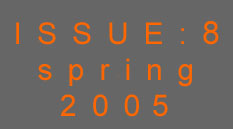

PIME time in Paris
Paris, capital city of Europe's largest nuclear
power producing nation, played host this month (from 13 - 17 February)
to PIME 2005 - the largest conference in the world especially
dedicated to nuclear communications. Around 200 nuclear communicators
from 32 countries congregated at the "Maison de la Chimie"
to take part in this annual event, which is now in its seventeenth
year. PIME (Public Information Materials Exchange) was organised
by the European Nuclear Society (ENS) in co-operation with the
IAEA and the programme was based on morning plenary sessions,
afternoon workshops and panel discussions. Among the participants
were representatives of nuclear power generators, energy suppliers,
waste management companies, members of national nuclear societies
and fora, senior EU officials and members of the global research
community.
|
PIME is not just a conference. It is a
unique forum for nuclear communicators to discuss major
topics facing the nuclear community, to share ideas on future
communications strategies and for learning how to communicate
more effectively. PIME also provides the ideal opportunity
for fellow professionals to network,
|

Happy Pimers
|
exchange news and views and share best practices
for communicating on issues that arouse great public interest
and sensitivity and sometimes fuel controversy.
The conference kicked off with an opening address
from Bertrand Barré, President of ENS and Scientific Communications
Advisor to the Chairman of AREVA, in which he welcomed participants
to Paris, focused on the programme and reiterated the objectives
of the conference.
The morning plenary sessions focused on some
of the key challenges facing nuclear communicators today. Among
the highlights were a presentation of a recent AREVA advertising
campaign, a BBC "If..." series documentary that illustrated
how the power of TV can carry an emotional, high-impact message
to a broad public, an IAEA session on crisis communications and
a roundtable discussion on the dialogue between nuclear energy
and society. In other sessions, delegates presented facts and
figures, including the results of recent opinion polls in their
respective countries.
During the afternoon workshops, the emphasis
was on interactive dialogue, analysis of practical examples and
identifying potential solutions. Among the subjects discussed
were communicating with local stakeholders, identifying best practices,
leading the debate on waste management and improving nuclear operators'
public image. Workshop moderators then had to summarise for delegates
the findings and recommendations that emerged from each workshop.
|

ENS President Bertrand Barré
hands over the PIME Award to Katalin
Kulacsy, Hungarian YGN
|
On the final
day of the conference, the first ever PIME Award for Communications
Excellence was presented to the Young Generation Nuclear
network in Hungary, in recognition of its dynamic communications
and proactive lobbying during Hungary's largest cultural
festival. This was followed by a two-part session devoted
to the current and future challenges facing the French nuclear
industry. The host country's sessions included a panel discussion
on waste management involving experts from AREVA, CEA, ANDRA
and EDF. Other presentations highlighted the challenges
of communicating on the EPR project and how presenting the
case for future technologies can pay dividends.
|
PIME 2005 concluded with an IAEA-sponsored closed
session on best practices in communications that focused on handling
the media and communicating in times of crisis. The next day,
around twenty delegates visited the CEA's nuclear research centre
at Saclay, near Paris.
|
A number of recurring themes and preoccupations regularly surfaced
during PIME. One was the need to dispel public misconceptions
with regard to the safety of storing radioactive waste.
This is still perceived as a stumbling block to increasing
public acceptance of nuclear energy as an economically viable
|

Young Generation Workshop with Kim Dahlbacka
and Boris Sucic
|
and clean source of energy. Another was the importance
of tailor-making communications to suit the specific needs of
specific audiences, such as public authorities and local communities.
Every communications tool and medium available must be used to
maximise the communications pay-off.
A first for PIME this year was the almost permanent
presence of senior officials from the European Commission, who
actually participated in a number of sessions and workshops. This
underlines the progress that the nuclear industry has made in
networking with European experts and policy-makers and in engaging
them in constructive debate.

Pime speakers
As Pimers left the conference centre and returned
home, the prevailing mood was one of guarded optimism, with many
delegates confirming that the tide of public opinion is - slowly
but surely - turning in nuclear energy's favour. As the vital
role that it plays in combating climate change and helping solve
the energy supply problem becomes more recognised, a more favourable
climate for communicating is created. The nuclear industry must
make the most of this opportunity and ensure that it gets its
key messages across more effectively.
Presentations are not available on the PIME Website,
but a CD will besend to the PIME 2005 Participants.

Gala Dinner
Next year, the PIME bandwagon moves on to Vienna,
from 12 - 16 February 2006. Note it down in your diary.
|












